Publisher's note: When you finish this Wyatt review, please spend a few moments using our Movie Database,
and feel welcome to return. Nearly everything important to movies, plus great images are there.
 Bilbo's Curiosity Triumphs Over Hobbit Pragmatism
Bilbo's Curiosity Triumphs Over Hobbit Pragmatism
Director Peter Jackson's first installment of his three part treatment of "The Hobbit" is, in essence, his collaboration with a long deceased J.R.R. Tolkien to create a sweeping fantasy that well represents one of the
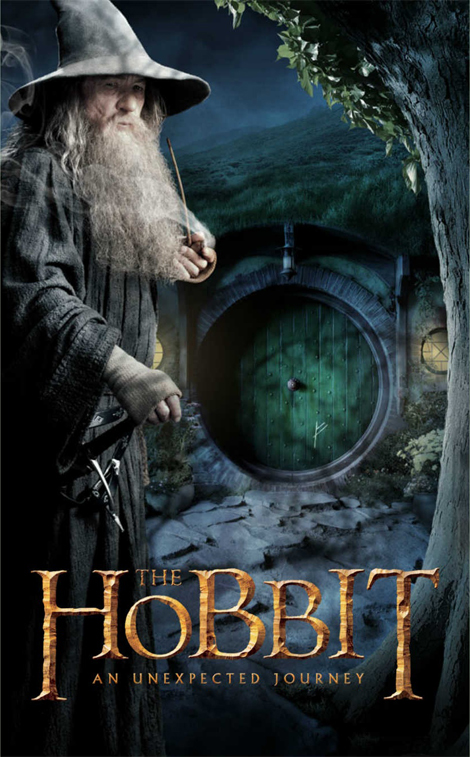
greatest stories of the Twentieth Century. It was a story that I well loved as an adolescent and as a young man, and as I grow middle-aged, I cherish it still.
One of the Twentieth Century's greatest childrens' stories was a fantastic adventure of one Bilbo Baggins, known simply, in the titular vernacular, as
"The Hobbit," was written by J.R.R. Tolkien to entertain his children and the children of other war weary parents across Great Britain in the decades following World War I -
"the war to end all wars". While
"The Hobbit" was the impetus for the in depth, deep and very dark
"Lord of the Rings" trilogy, it also served as an abridged prequel to
"The Trilogy" having been edited by Tolkien in each edition before their publication. When I first read "The Hobbit" in the late 1960's the great story had been re-edited 3 times, thus refining the literary thread between the two classics created by the linguist professor.
To create
"The Hobbit," J.R.R. Tolkien employed his life experiences, his intellectual interest in the linguistic backbone of Latin and Germanic languages, and his enormous sense of the fantastic to create Middle Earth - a place where civility and terror collide to create the fertile literary field for this story of enormous scale.
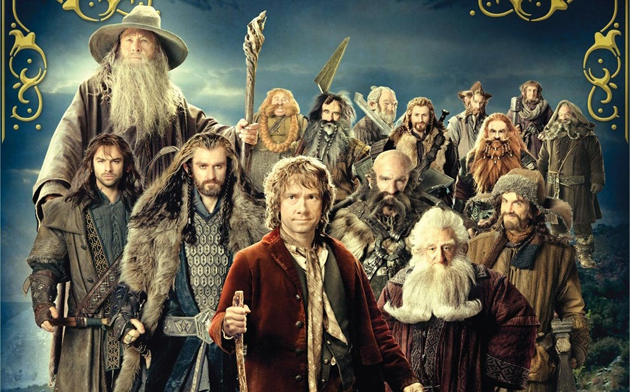 The merry band of serious burglars make their way from the Shire to Lonely Mountain. All takes place in Middle Earth: Above. Chief among these vastly dissimilar burglars is Bilbo Baggins (the Hobbit), played by Martin Freeman: Below. Click the picture to expand to as much as 1000 pixels wide within most expanded images, and then push the arrows embedded in the center edge of the play-box to access the gallery, and slide new images into viewing within the center of the screen.
The merry band of serious burglars make their way from the Shire to Lonely Mountain. All takes place in Middle Earth: Above. Chief among these vastly dissimilar burglars is Bilbo Baggins (the Hobbit), played by Martin Freeman: Below. Click the picture to expand to as much as 1000 pixels wide within most expanded images, and then push the arrows embedded in the center edge of the play-box to access the gallery, and slide new images into viewing within the center of the screen.
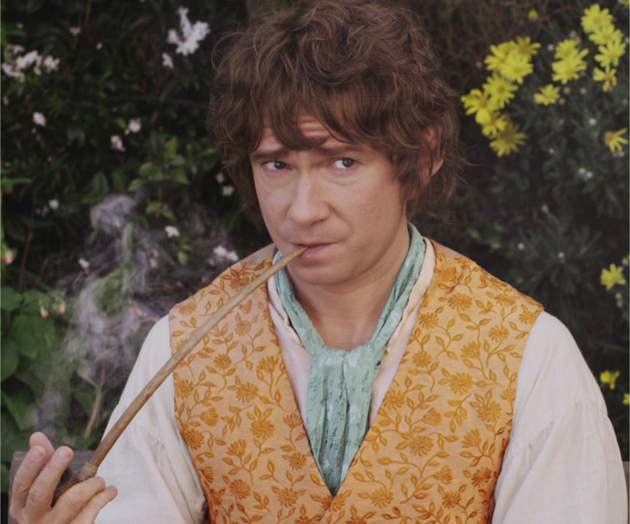
J.R.R. Tolkien was a devout Catholic, believing well in the good vs. evil conundrum that is the basis of Judeo-Christian values that govern true Christians, and the author had known the Hell of the deadly trenches of northern France in the first World War. For Tolkien to scribe an epic the scale of
"The Hobbit," and not include all manner of warfare conducive to that period, within his fantasy, would have been a travesty completely untrue to the nature of the personal character of his human condition.
In Director Peter Jackson's first installment of the
"The Hobbit," where the burglars, comprised of 13 oddly assembled dwarves, one capable wizard, and one reluctant hobbit, danger greets this diverse troop just beyond the boundary of the sheltered Shire. From this point on along the way to the Elf Kingdom of Rivendell - the domain of Elrond - across the Misty Mountains, and beyond, these banded burglars would save each other from certain death at the hands of terrible foes: trolls, goblins, orks, fantastic thunder-rock monsters, and one rather grotesque, and terminally psychotic former hobbit, who exists in the damp, dark recesses beneath the Misty Mountains - Gollum.
 Bilbo, Martin Freeman, encounters the snot sneezed wrath of a disgusting troll just miles from the border of the Shire: Above. The psychotic Gollum, played by Andy Serkis, with the help of copious CG: Below. Click the picture to expand to as much as 1000 pixels wide within most expanded images, and then push the arrows embedded in the center edge of the play-box to access the gallery, and slide new images into viewing within the center of the screen.
Bilbo, Martin Freeman, encounters the snot sneezed wrath of a disgusting troll just miles from the border of the Shire: Above. The psychotic Gollum, played by Andy Serkis, with the help of copious CG: Below. Click the picture to expand to as much as 1000 pixels wide within most expanded images, and then push the arrows embedded in the center edge of the play-box to access the gallery, and slide new images into viewing within the center of the screen.
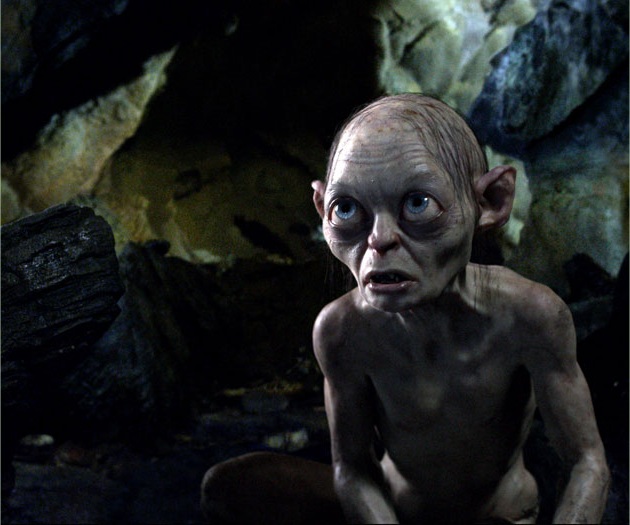
While weaving his Children's fable of the conditional triumph of good over evil, Tolkien expressed the unvarnished certainty that all matter of progress, in this most worthy of endeavors, does come at a price. That price is measured in every character, in their every endeavor, and becomes the sum of their overarching need to right the wrongs wrought upon their Dwarven fathers in what eventually becomes the essence of Tolkien's understanding of the civilized limits within the concept of an acceptable total war.
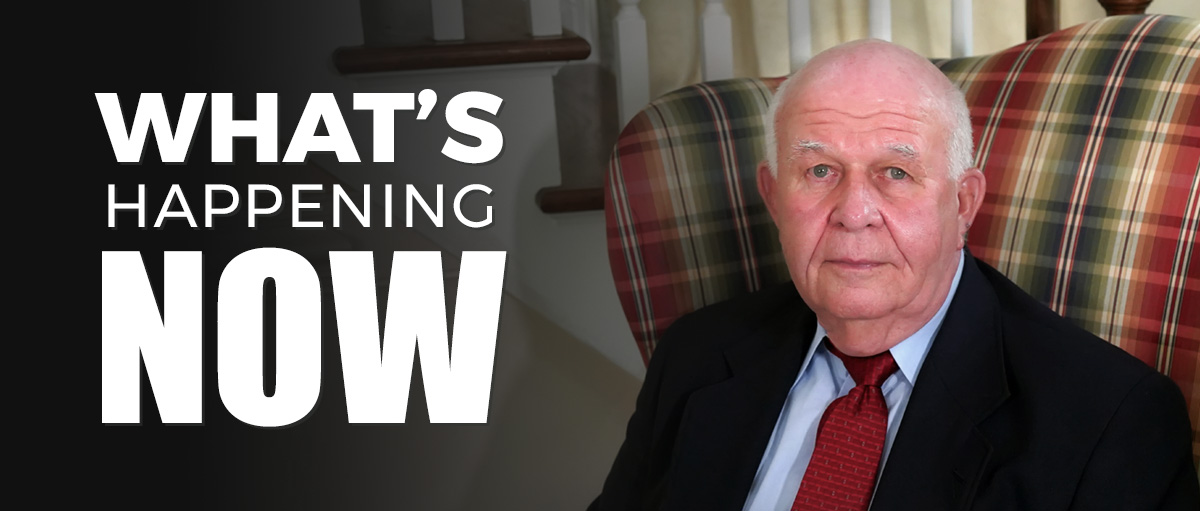
Total war for the 13 Dwarves: Fili, Kili, Bofur, Thorin, Dwalin, Ori, Gloin, Nori, Dori, Oin, Bifur, Bombur and Balin is to take revenge on the perpetrator, the enormous, and equally malevolent dragon Smaug, of the destruction of their ancestral home, Khazad-dûm, under the Misty Mountains, and later to be known as the Mines of Moria. Their unforgiving commitment to the destruction of this singular dragon, who had had murdered vast numbers of their ancestors, when it stole the Dwarves' incredible fortune of gold and gems mined from the mountain's deep seams over millennia, was paramount to the Dwarves' one ambition, an ambition that would eventually become Bilbo Baggin's singular purpose.


 greatest stories of the Twentieth Century. It was a story that I well loved as an adolescent and as a young man, and as I grow middle-aged, I cherish it still.
greatest stories of the Twentieth Century. It was a story that I well loved as an adolescent and as a young man, and as I grow middle-aged, I cherish it still.



